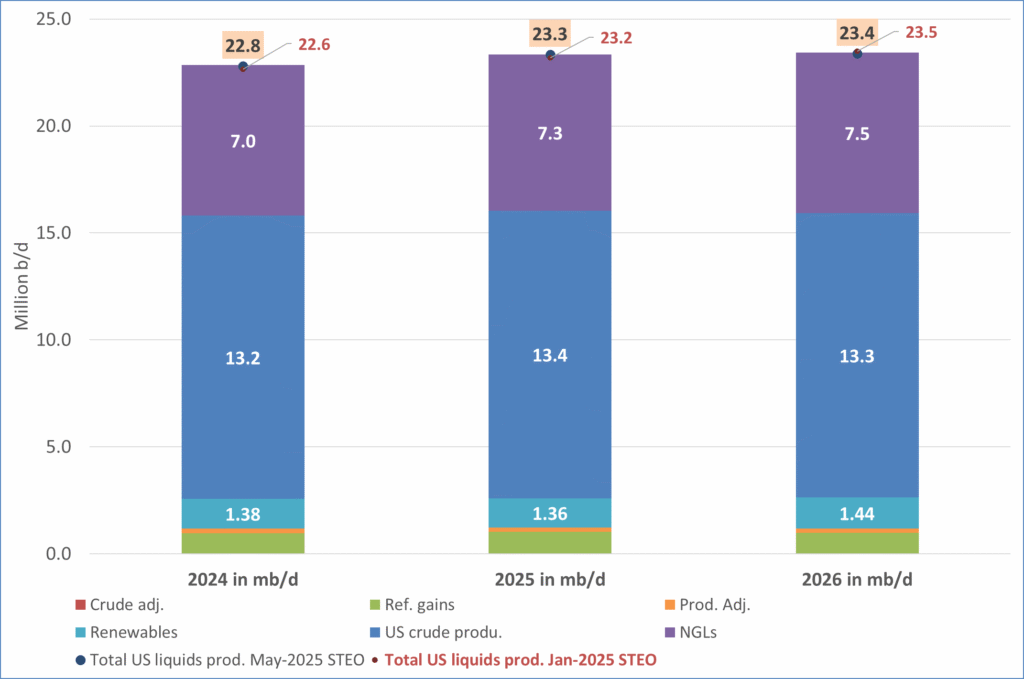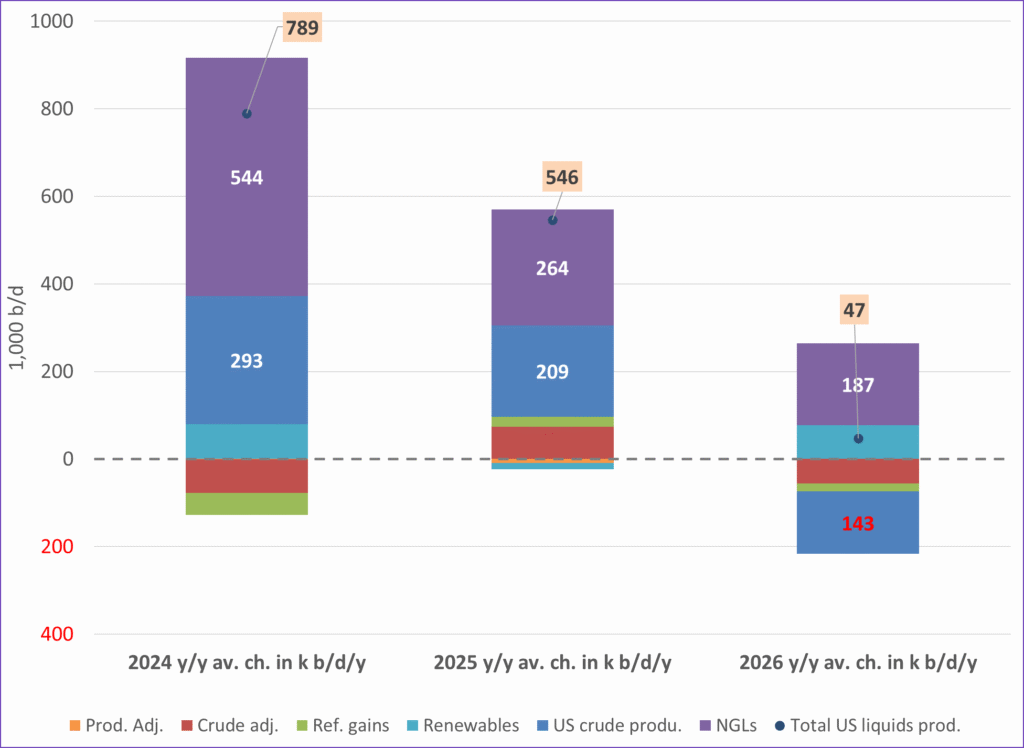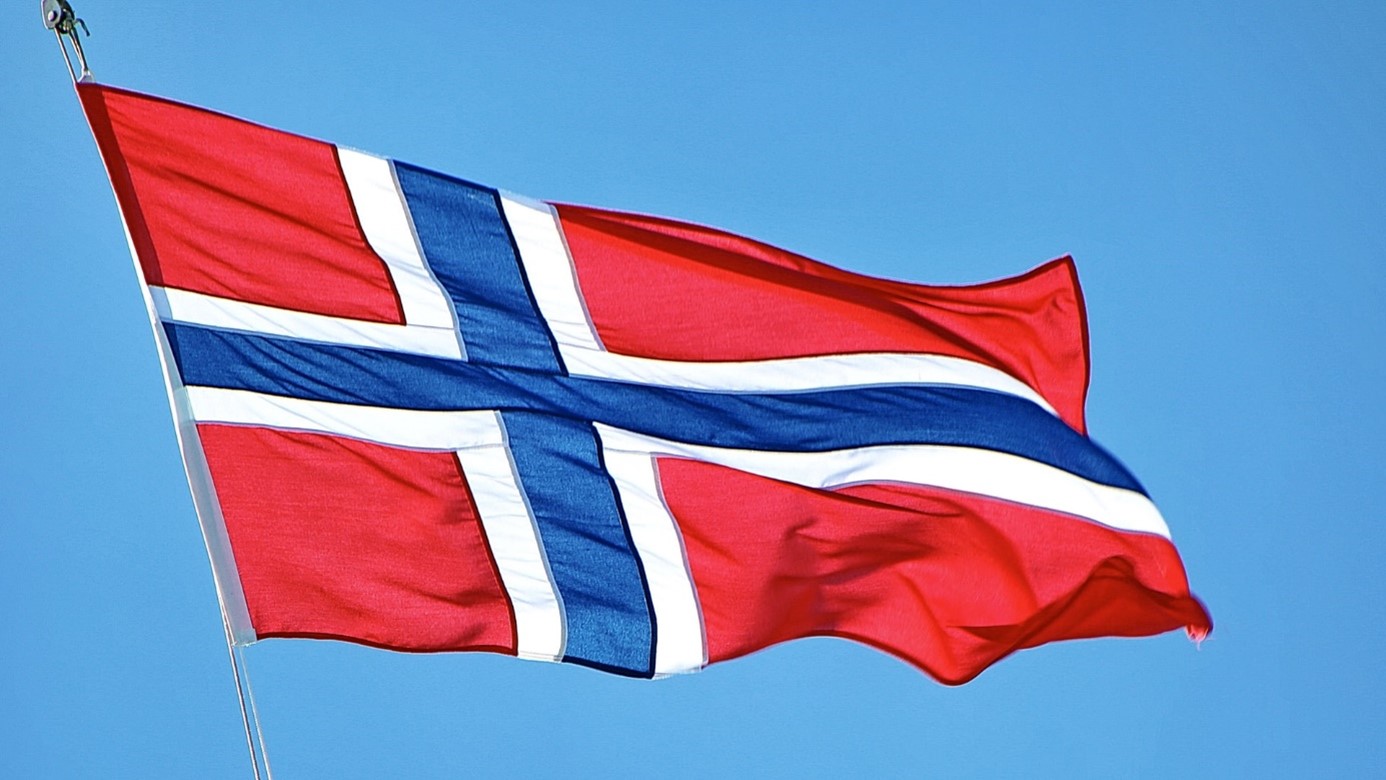Analys
Bulls recover their confidence as US crude stocks draws lower

 Over the past week we have seen some sharp moves to the downside with Brent trading down to below $47/b before recovering. The sell-off was partly in a joint sell-off together with industrial metals. Possibly on the back of general commodity profit taking as some indications pointed to a peak in growth momentum.
Over the past week we have seen some sharp moves to the downside with Brent trading down to below $47/b before recovering. The sell-off was partly in a joint sell-off together with industrial metals. Possibly on the back of general commodity profit taking as some indications pointed to a peak in growth momentum.
There is clearly a widespread consensus that OPEC will roll cuts over into H2-17. The decision is however still ahead of us and as such is an uncertain element which creates some hesitation in the market. Better safe than sorry and as such we are likely to head into the meeting most likely at the low side of the prise spectre with a bounce up after the meeting with what now seems likely a positive decision by OPEC to roll cuts over into H2-17. Trading Brent crude at around $51-52/b ahead of the meeting with a jump up to $56/b post the meeting seems sensible.
We have seen some aired concerns that oil demand growth is coming in much weaker than expected with a growth rate as low as 0.8 mb/d y/y in H1-17. We find it hard to believe at the moment that there should be reason to be concerned for such a soft global oil demand growth in 2017. Overall oil demand growth is quite steady and fairly well related to overall global economic growth. In 2014 we had the exact same kind of concern where oil demand at times was estimated as low as 0.7 mb/d y/y. In hindsight though it has been adjusted up to 1.4% y/y for that year or +1.3 mb/d oil demand growth in 2014.
The US EIA on Tuesday released its monthly Short Term Energy Outlook (STEO) for May. It adjusted global supply up by 0.2% for both 2017 and 2018 while demand was lifted by 0.1% for each year. Net it saw a global surplus of 0.17 mb/d and 0.47 mb/d respectively for the two years. With a slightly higher projected surplus it adjusted its Brent and WTI price forecast down by 3% each for 2017 to $52.6/b and $50.7/b respectively for the two grades. The price forecast for 2018 was kept unchanged at $57.1/b and $55.1/b respectively for Brent and WTI. With a projected surplus for both 2017 and 2018 it naturally saw no draw down in OECD inventories neither in 2017 nor in 2018. It projected OECD ending stocks to end 2018 at 3109 mb which was 2.2% higher than in its April report and above the 2016 ending stock level of 2967 mb. Such an outlook should mean that the contango in the crude oil curves should be just as deep in 2017 as in 2018. It is a bit difficult to understand why they have a higher price forecast for 2018 than for 2017 when inventories are rising in 2018. The forecast for 2018 is actually 8.5% higher in 2018 than for 2017. The only explanation for such a view is that cost inflation will push prices higher.
US crude oil inventories yesterday showed a decline of 5.8 mb last week with gasoline declining 0.2 mb and distillates declining 1.6 mb. That gave the market back a lot of confidence. Total crude and product stocks in the US has actually been falling since mid-February but very high inventories for crude specifically has created lots of discomfort for the oil bulls this spring. Yesterday however some of those concerns were eased. The US EIA also estimated US crude production to be 9.3 mb/d last week (+21 kb/d w/w). In its STEO report on the EIA projected that US crude production would rise to 9.7 mb/d in November 2017 and thus pas its prior peak of 9.6 mb/d.
In perspective it is good to take a look at the current global rig count. It stood at 3656 rigs in 2014 while it stood at 2065 rigs in March according to OPEC. Also, it actually fell 42 rigs mth/mth from February. From 2014 to the latest count there is a drop of 43%. If we adjust for US shale oil volume productivity where today’s 600 shale oil rigs are as effective as 1200 rigs in 2014 we still get that the effective real decline in oil rigs is about 30% since 2014. Our ball-park figure is that only 20% of global upstream oil investments are needed to cover the global oil demand growth of some 1.3 mb/d y/y. The other 80% of upstream investments are basically used to produce oil that will counter declining production in existing production. The same goes for oil rigs. Only 20% of the rigs are needed to cover oil demand growth. The other 80% are needed to cover declines. Thus a 20% decline in real, global rig count will lead to no growth in global oil production. The above rig count does however not dissect between rigs used for prospecting versus rigs used to create production rigs. And as such the decline gives a misleading picture since prospecting for oil was the first to be cut in the downturn.
In the shorter term price picture we believe that Brent crude front month will head towards $51-52/b ahead of the OPEC meeting. Technically it then first out needs to break above $51.1/b and then more importantly above $51.67/b. Breaking above the later would technically be a goodbye to the downside technical correction we have had lately.
Kind regards
Bjarne Schieldrop
Chief analyst, Commodities
SEB Markets
Merchant Banking
Analys
Brent crude ticks higher on tension, but market structure stays soft

Brent crude has climbed roughly USD 1.5-2 per barrel since Friday, yet falling USD 0.3 per barrel this mornig and currently trading near USD 67.25/bbl after yesterday’s climb. While the rally reflects short-term geopolitical tension, price action has been choppy, and crude remains locked in a broader range – caught between supply-side pressure and spot resilience.

Prices have been supported by renewed Ukrainian drone strikes targeting Russian infrastructure. Over the weekend, falling debris triggered a fire at the 20mtpa Kirishi refinery, following last week’s attack on the key Primorsk terminal.
Argus estimates that these attacks have halted ish 300 kbl/d of Russian refining capacity in August and September. While the market impact is limited for now, the action signals Kyiv’s growing willingness to disrupt oil flows – supporting a soft geopolitical floor under prices.
The political environment is shifting: the EU is reportedly considering sanctions on Indian and Chinese firms facilitating Russian crude flows, while the U.S. has so far held back – despite Bessent warning that any action from Washington depends on broader European participation. Senator Graham has also publicly criticized NATO members like Slovakia and Hungary for continuing Russian oil imports.
It’s worth noting that China and India remain the two largest buyers of Russian barrels since the invasion of Ukraine. While New Delhi has been hit with 50% secondary tariffs, Beijing has been spared so far.
Still, the broader supply/demand balance leans bearish. Futures markets reflect this: Brent’s prompt spread (gauge of near-term tightness) has narrowed to the current USD 0.42/bl, down from USD 0.96/bl two months ago, pointing to weakening backwardation.
This aligns with expectations for a record surplus in 2026, largely driven by the faster-than-anticipated return of OPEC+ barrels to market. OPEC+ is gathering in Vienna this week to begin revising member production capacity estimates – setting the stage for new output baselines from 2027. The group aims to agree on how to define “maximum sustainable capacity,” with a proposal expected by year-end.
While the IEA pegs OPEC+ capacity at 47.9 million barrels per day, actual output in August was only 42.4 million barrels per day. Disagreements over data and quota fairness (especially from Iraq and Nigeria) have already delayed this process. Angola even quit the group last year after being assigned a lower target than expected. It also remains unclear whether Russia and Iraq can regain earlier output levels due to infrastructure constraints.
Also, macro remains another key driver this week. A 25bp Fed rate cut is widely expected tomorrow (Wednesday), and commodities in general could benefit a potential cut.
Summing up: Brent crude continues to drift sideways, finding near-term support from geopolitics and refining strength. But with surplus building and market structure softening, the upside may remain capped.
Analys
Volatile but going nowhere. Brent crude circles USD 66 as market weighs surplus vs risk

Brent crude is essentially flat on the week, but after a volatile ride. Prices started Monday near USD 65.5/bl, climbed steadily to a mid-week high of USD 67.8/bl on Wednesday evening, before falling sharply – losing about USD 2/bl during Thursday’s session.

Brent is currently trading around USD 65.8/bl, right back where it began. The volatility reflects the market’s ongoing struggle to balance growing surplus risks against persistent geopolitical uncertainty and resilient refined product margins. Thursday’s slide snapped a three-day rally and came largely in response to a string of bearish signals, most notably from the IEA’s updated short-term outlook.
The IEA now projects record global oversupply in 2026, reinforcing concerns flagged earlier by the U.S. EIA, which already sees inventories building this quarter. The forecast comes just days after OPEC+ confirmed it will continue returning idle barrels to the market in October – albeit at a slower pace of +137,000 bl/d. While modest, the move underscores a steady push to reclaim market share and adds to supply-side pressure into year-end.
Thursday’s price drop also followed geopolitical incidences: Israeli airstrikes reportedly targeted Hamas leadership in Doha, while Russian drones crossed into Polish airspace – events that initially sent crude higher as traders covered short positions.
Yet, sentiment remains broadly cautious. Strong refining margins and low inventories at key pricing hubs like Europe continue to support the downside. Chinese stockpiling of discounted Russian barrels and tightness in refined product markets – especially diesel – are also lending support.
On the demand side, the IEA revised up its 2025 global demand growth forecast by 60,000 bl/d to 740,000 bl/d YoY, while leaving 2026 unchanged at 698,000 bl/d. Interestingly, the agency also signaled that its next long-term report could show global oil demand rising through 2050.
Meanwhile, OPEC offered a contrasting view in its latest Monthly Oil Market Report, maintaining expectations for a supply deficit both this year and next, even as its members raise output. The group kept its demand growth estimates for 2025 and 2026 unchanged at 1.29 million bl/d and 1.38 million bl/d, respectively.
We continue to watch whether the bearish supply outlook will outweigh geopolitical risk, and if Brent can continue to find support above USD 65/bl – a level increasingly seen as a soft floor for OPEC+ policy.
Analys
Waiting for the surplus while we worry about Israel and Qatar

Brent crude makes some gains as Israel’s attack on Hamas in Qatar rattles markets. Brent crude spiked to a high of USD 67.38/b yesterday as Israel made a strike on Hamas in Qatar. But it wasn’t able to hold on to that level and only closed up 0.6% in the end at USD 66.39/b. This morning it is starting on the up with a gain of 0.9% at USD 67/b. Still rattled by Israel’s attack on Hamas in Qatar yesterday. Brent is getting some help on the margin this morning with Asian equities higher and copper gaining half a percent. But the dark cloud of surplus ahead is nonetheless hanging over the market with Brent trading two dollar lower than last Tuesday.

Geopolitical risk premiums in oil rarely lasts long unless actual supply disruption kicks in. While Israel’s attack on Hamas in Qatar is shocking, the geopolitical risk lifting crude oil yesterday and this morning is unlikely to last very long as such geopolitical risk premiums usually do not last long unless real disruption kicks in.
US API data yesterday indicated a US crude and product stock build last week of 3.1 mb. The US API last evening released partial US oil inventory data indicating that US crude stocks rose 1.3 mb and middle distillates rose 1.5 mb while gasoline rose 0.3 mb. In total a bit more than 3 mb increase. US crude and product stocks usually rise around 1 mb per week this time of year. So US commercial crude and product stock rose 2 mb over the past week adjusted for the seasonal norm. Official and complete data are due today at 16:30.
A 2 mb/week seasonally adj. US stock build implies a 1 – 1.4 mb/d global surplus if it is persistent. Assume that if the global oil market is running a surplus then some 20% to 30% of that surplus ends up in US commercial inventories. A 2 mb seasonally adjusted inventory build equals 286 kb/d. Divide by 0.2 to 0.3 and we get an implied global surplus of 950 kb/d to 1430 kb/d. A 2 mb/week seasonally adjusted build in US oil inventories is close to noise unless it is a persistent pattern every week.
US IEA STEO oil report: Robust surplus ahead and Brent averaging USD 51/b in 2026. The US EIA yesterday released its monthly STEO oil report. It projected a large and persistent surplus ahead. It estimates a global surplus of 2.2 m/d from September to December this year. A 2.4 mb/d surplus in Q1-26 and an average surplus for 2026 of 1.6 mb/d resulting in an average Brent crude oil price of USD 51/b next year. And that includes an assumption where OPEC crude oil production only averages 27.8 mb/d in 2026 versus 27.0 mb/d in 2024 and 28.6 mb/d in August.
Brent will feel the bear-pressure once US/OECD stocks starts visible build. In the meanwhile the oil market sits waiting for this projected surplus to materialize in US and OECD inventories. Once they visibly starts to build on a consistent basis, then Brent crude will likely quickly lose altitude. And unless some unforeseen supply disruption kicks in, it is bound to happen.
US IEA STEO September report. In total not much different than it was in January

US IEA STEO September report. US crude oil production contracting in 2026, but NGLs still growing. Close to zero net liquids growth in total.

-

 Nyheter4 veckor sedan
Nyheter4 veckor sedanMeta bygger ett AI-datacenter på 5 GW och 2,25 GW gaskraftverk
-

 Nyheter4 veckor sedan
Nyheter4 veckor sedanAker BP gör ett av Norges största oljefynd på ett decennium, stärker resurserna i Yggdrasilområdet
-

 Nyheter4 veckor sedan
Nyheter4 veckor sedanSommarens torka kan ge högre elpriser i höst
-

 Analys4 veckor sedan
Analys4 veckor sedanBrent edges higher as India–Russia oil trade draws U.S. ire and Powell takes the stage at Jackson Hole
-

 Nyheter3 veckor sedan
Nyheter3 veckor sedanMahvie Minerals är verksamt i guldrikt område i Finland
-

 Analys3 veckor sedan
Analys3 veckor sedanIncreasing risk that OPEC+ will unwind the last 1.65 mb/d of cuts when they meet on 7 September
-

 Analys2 veckor sedan
Analys2 veckor sedanOPEC+ in a process of retaking market share
-

 Nyheter3 veckor sedan
Nyheter3 veckor sedanNeil Atkinson spår att priset på olja kommer att stiga till 70 USD









